How to Do LinkedIn Sentiment Analysis? Example & Guide
Table of contents
Psyyyyt! It’s not a secret that LinkedIn has grown more decisive year after year. In 2024, engagement increased by 22% compared to the previous year. This means users engage more frequently and, more importantly, willingly. This is a sign that now is the perfect time to ramp up your activities on LinkedIn and start building a positive sentiment around your brand!
Let me show you what this means!
LinkedIn sentiment analysis tracks and categorizes emotions in posts, comments, and interactions as positive, negative, or neutral. It helps you understand how people feel about your brand or content, allowing you to respond quickly to positive feedback or address potential issues before they grow.
Monitoring sentiment on LinkedIn enables you to engage effectively and strengthen your professional reputation, which is crucial on LinkedIn.
What is LinkedIn sentiment analysis?
This question crosses marketers’ minds at least once.
In short, LinkedIn sentiment analysis involves tracking LinkedIn posts and comments to understand whether they are positive, negative, or neutral.
This is important because the data collected is a goldmine of knowledge about our consumers and their preferences, as well as the key to accurately analyzing the current market situation or competition.
Positive mention

Negative mention

You see, sentiment analysis is a bit like gaining access to the recipe for engaging your audience—what they like, what they don’t, and, most importantly, what they need.
What’s more?
It enables you to:
- Understand Emotions: Tailor content by knowing your audience’s feelings.
- Engage Better: Craft messages that resonate widely.
- Spot Issues Early: Address negative trends before they escalate.
- Boost Engagement: Focus on what matters to your audience.
- Build Reputation: Respond proactively to audience feedback.
How to do LinkedIn sentiment analysis?
The answer to this question may vary depending on who is answering it.
Excel and Google Sheets enthusiasts would say, “Oh, creating a table is the best option,” and they may be right. However, inputting all that data into a system would take many hours.
That’s why I’m a fan of other solutions that media monitoring tools offer.
These tools are designed to analyze thousands of mentions in seconds, using AI to collect and categorize data by sentiment accurately. Helpful, right?
While AI is invaluable and dramatically speeds up our work, it’s still learning and can sometimes struggle with sarcasm, slang, or emojis.
But let’s be honest – many of us face similar challenges. So, instead of dismissing AI tools altogether, it makes sense to use their potential to support and improve our sentiment analysis efforts.
LinkedIn sentiment analysis example
Now, I’d like to show you exactly how each stage of my sentiment analysis process on LinkedIn looks.
I often use Brand24, an AI-powered sentiment analysis tool that gathers all mentions about any brand, topic, or hashtag. This approach allows me to get valuable insights, which I find much more reliable.
Step 1: Set up the monitoring project and collect data
I need to choose a word or keywords for my project to get started. This will allow the tool to search the internet to gather all mentions.
Let’s check how Airbnb has been performing on LinkedIn.
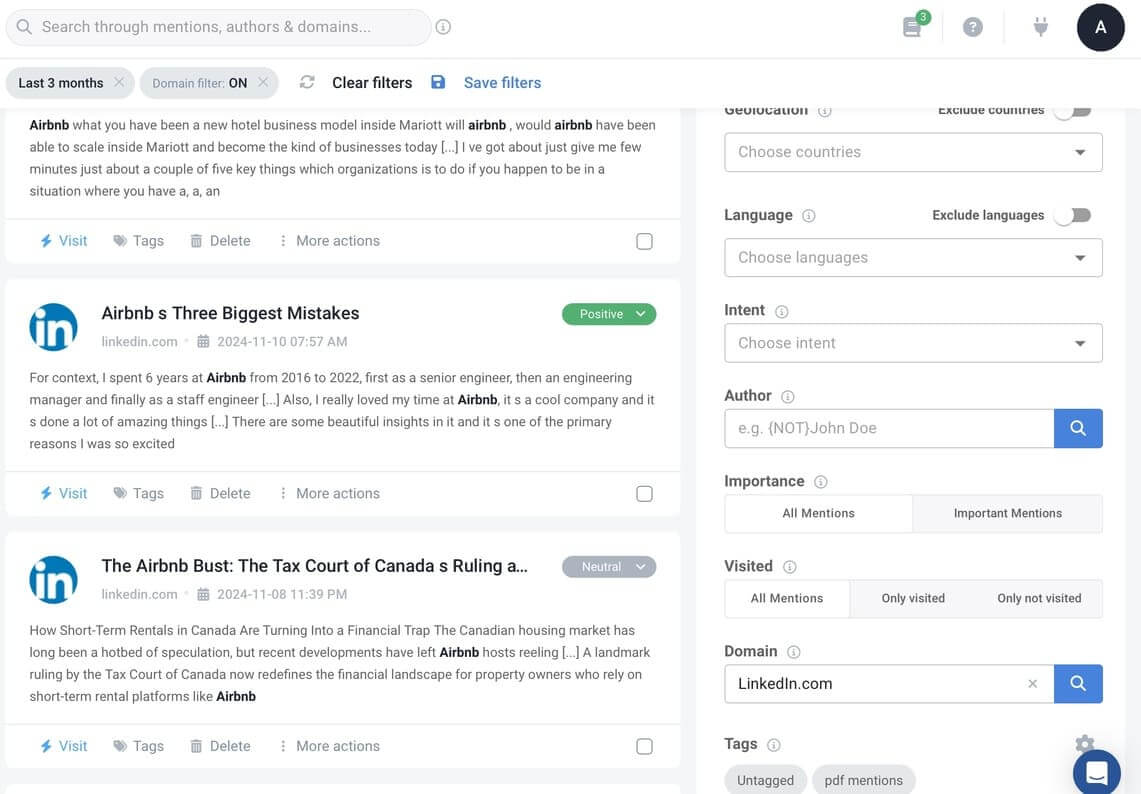
You can filter all mentions by:
- Sentiment — positive, negative, or neutral.
- Influence score — A higher influence score indicates a more substantial impact of the mention on brand perception.
- Relevance — This filter helps display the most relevant reviews, focusing on those that can impact the audience the most.
- Intent —To quickly find what you’re looking for. Select specific goals to analyze, such as customer satisfaction, purchase intent, or brand loyalty.
- Location — This is probably the filter I use most often to expand my network of contacts on LinkedIn.
Step 2: Check the sentiment breakdown
To look deeper into sentiment analysis, I check the sentiment chart. There are two lines: green for positive sentiment and red for negative sentiment.
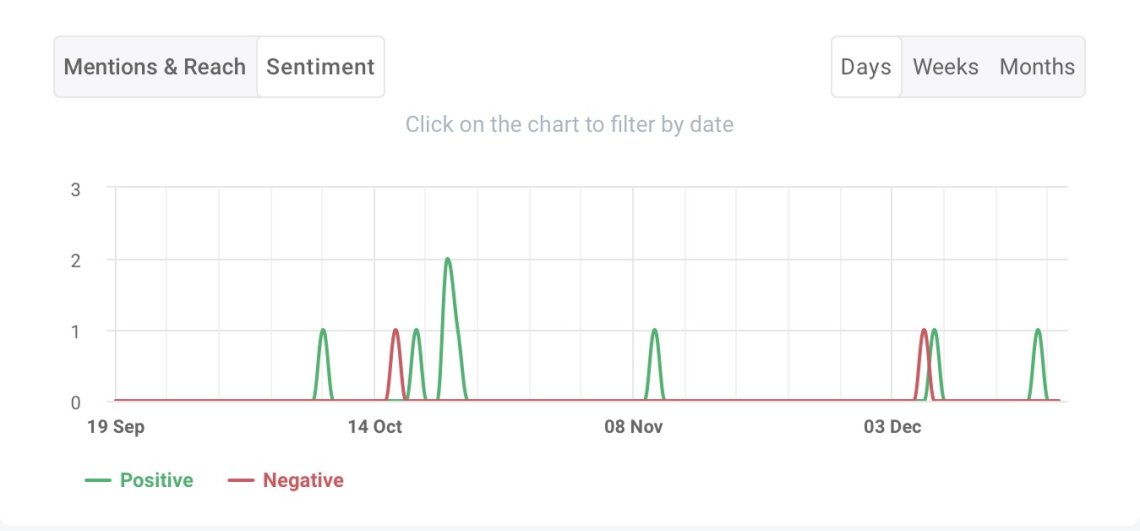
Brand24 offers an even deeper analysis. The Analyze tab contains a sentiment breakdown that shows the percentage of sentiment.
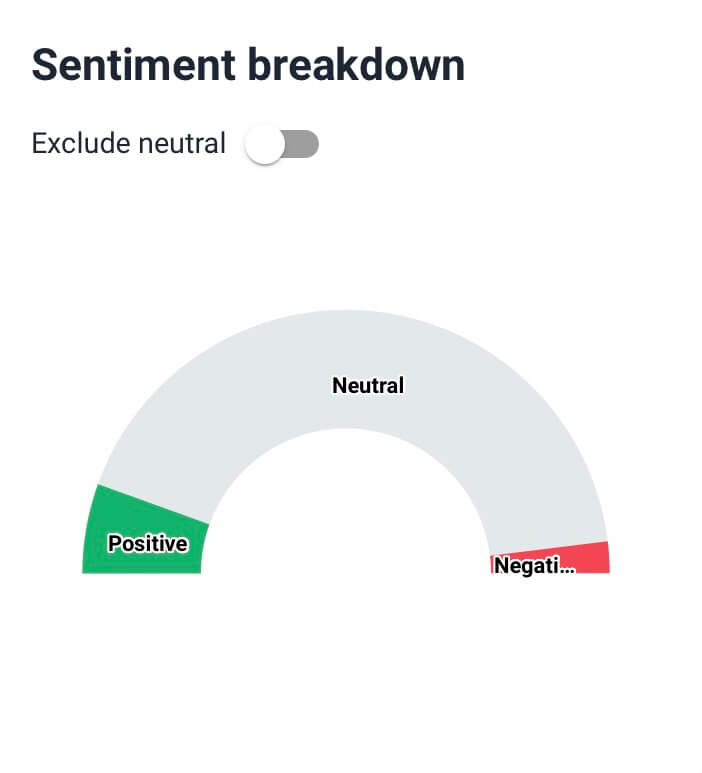
(neutral mentions are included)
Here are the sentiment analysis results for Airbnb on LinkedIn. Out of all LinkedIn mentions, more than 150 were positive, while only 22 were identified as harmful.
Step 3: Discover the exact emotions
Behind every post or comment, there are emotions.
That’s why, in my next stage, I check users’ feelings. In the Emotion Analysis tab, I can find all key insights.
Take a look at how it works!
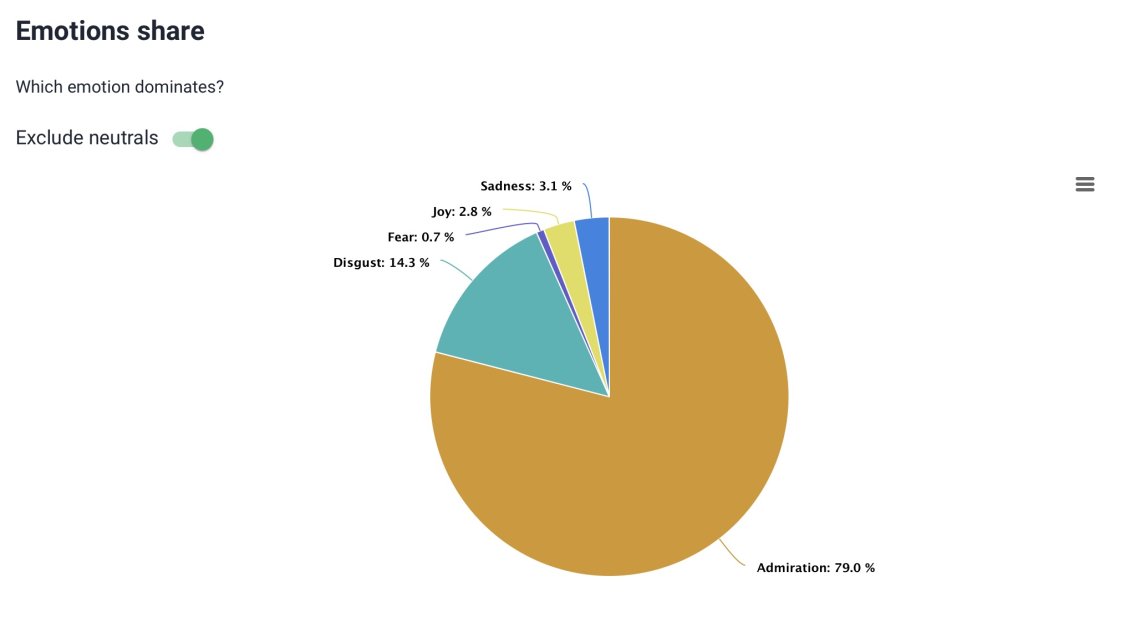
(neutral emotions are excluded)
Brand24 allows me to extract all the key emotions behind mentions. This enables us to analyze anomalies in real time and compare and monitor them over time.
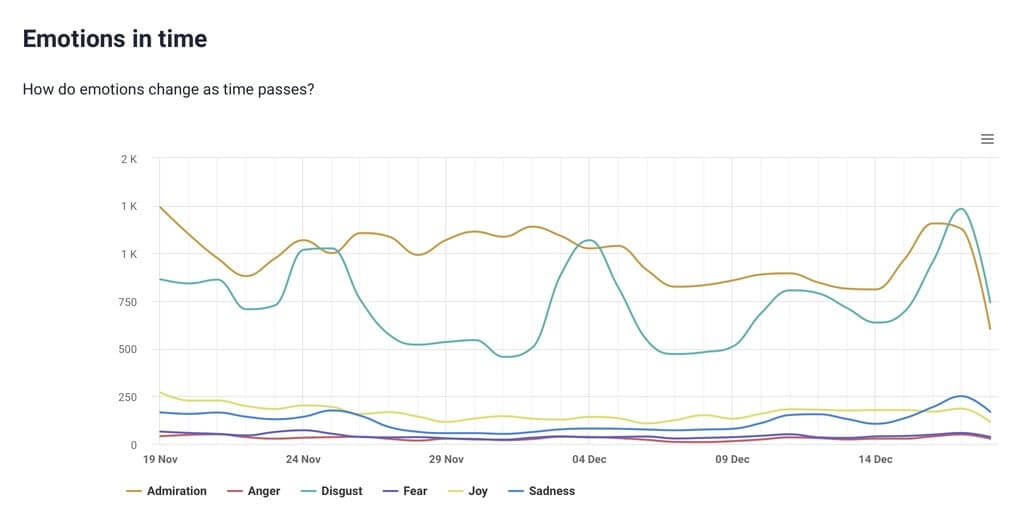
It’s easy to spot whether our actions successfully engage the audience, right?
Step 4: Check the emojis
People love emoticons!
They are the reason why people communicate emotions even more strongly. That’s why it’s crucial to incorporate them into the sentiment analysis process.
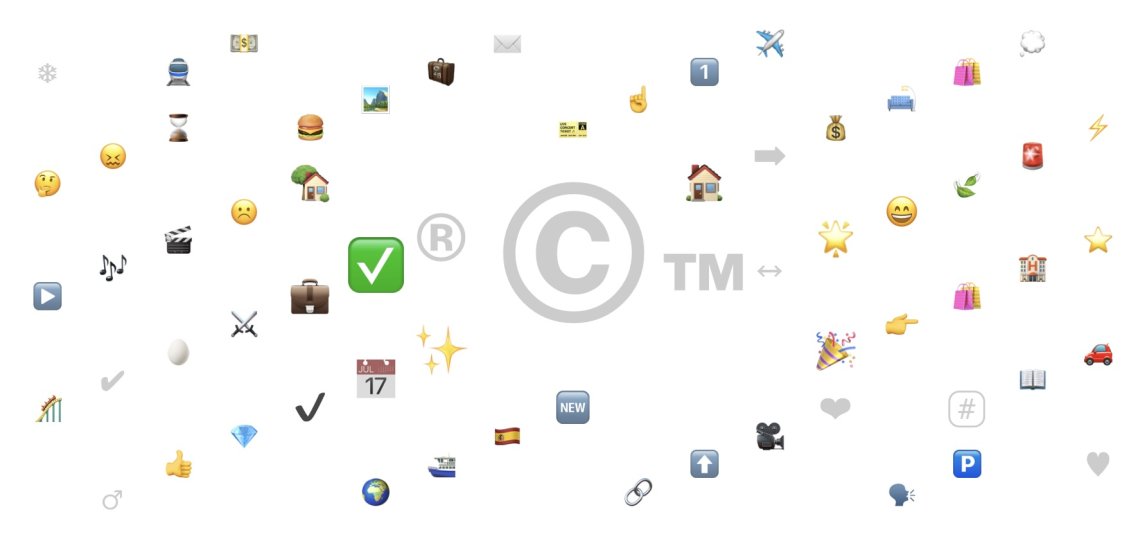
Above, emoji analysis shows key aspects of travel, like accommodation, food, and attractions. However, it’s good to check what those unfavorable emojis come from.
Step 5: Dive into topics
It’s important to remember that public sentiment depends on a specific topic, situation, or preferences.
That’s why I don’t limit sentiment analysis to the general picture.
Instead, I look closely at each topic around the brand. This could be a new product or campaign, the need for changes in customer service, or the emergence of a new demand in the marketplace, thus taking advantage of new opportunities to get ahead of the competition.

No surprise, LinkedIn is the perfect platform to discuss the tech startup ecosystem of Airbnb.
In the last 30 days, it received 135 mentions and reached 923K people. However, the real significance is the 44.22% share of voice, which means it is a significant topic among all Airbnb mentions – good insights to be monitored.
But let’s check out more insights into this topic!
Click “More status”.
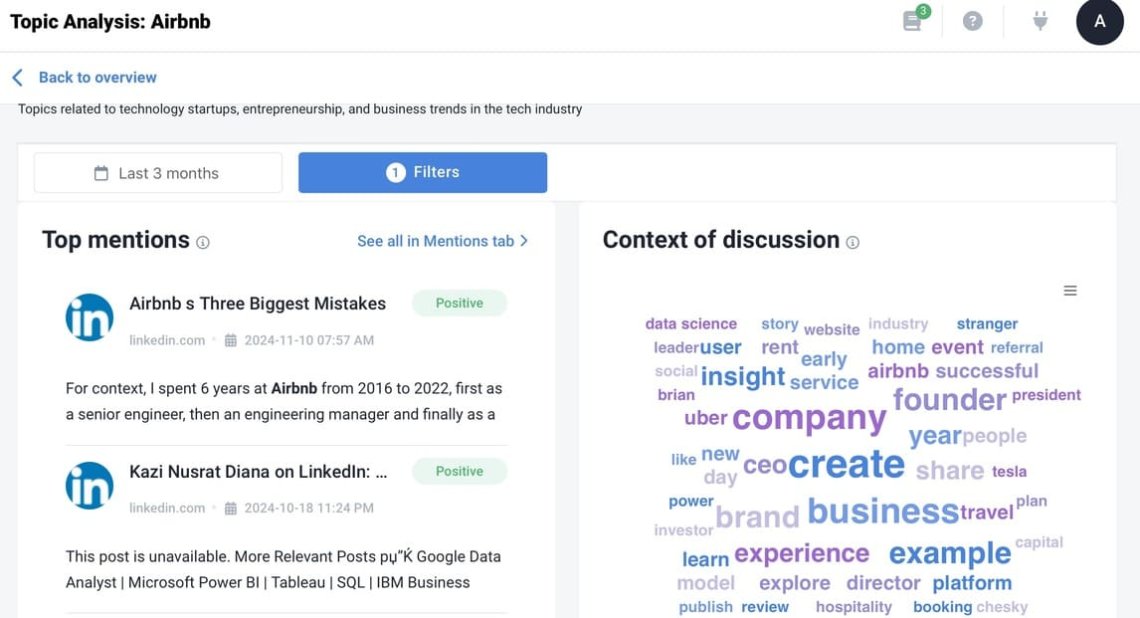
Then you will find:
- Intent share – to understand user motivations
- Context – for a deeper look at the conversation
- Top mentions – highlighting key references
- Emojis – to analyze the emotional tone
All the necessary data to analyze user engagement and gain insights into user input in one place. Allowing you to develop more effective strategies and conduct accurate sentiment analysis.
Step 6: Track the sentiment over time
Nothing lasts forever.
That’s why keeping your finger on the pulse is important, as well as acting quickly to prevent a potential crisis or fully capitalize on opportunities to reach a larger audience.
In the ‘Comparison’ tab, you can compare yourself not only to competition – which is very useful, especially during business research – but also to your past performance.
Let’s check how Airbnb is performing now during the Christmas period!

It looks like sentiment is improving, providing some interesting insights – travel for Christmas has become more popular!
It is good to remember that emotions change very quickly on social media. Sometimes, it only takes one wrong step or missing a single new video from a highly influential person whose opinion can shift the overall sentiment. And then, it’s like a domino effect…
Therefore, analyzing sentiment systematically is crucial, especially during peak seasons or when launching new campaigns.
Why is it important to constantly perform sentiment analysis on LinkedIn?
- Catch Issues Early: identify spikes in negative sentiment and act quickly.
- Measure the impact of a product or campaign launch.
- Monitor overall changes in brand sentiment.
Conclusion
Behind every post and comment are people. Therefore, analyzing their sentiment is key to building a strong brand reputation and creating a loyal community on LinkedIn.
Not regularly analyzing the sentiment around your brand? You’re missing an opportunity to improve your strategy and communications.
Final thoughts:
- Be smart: Use AI marketing tools that provide faster and more accurate results than manual tracking (e.g., Google Sheets).
- Be consistent: Monitor posts, comments, and LinkedIn hashtags regularly to catch changes in sentiment early.
- Engage your community: LinkedIn is the right place to show that your company is really listening to its audience. Regular interaction builds trust and reinforces positive sentiment.
Want to improve LinkedIn performance? Start sentiment analysis with the Brad24 trial!



